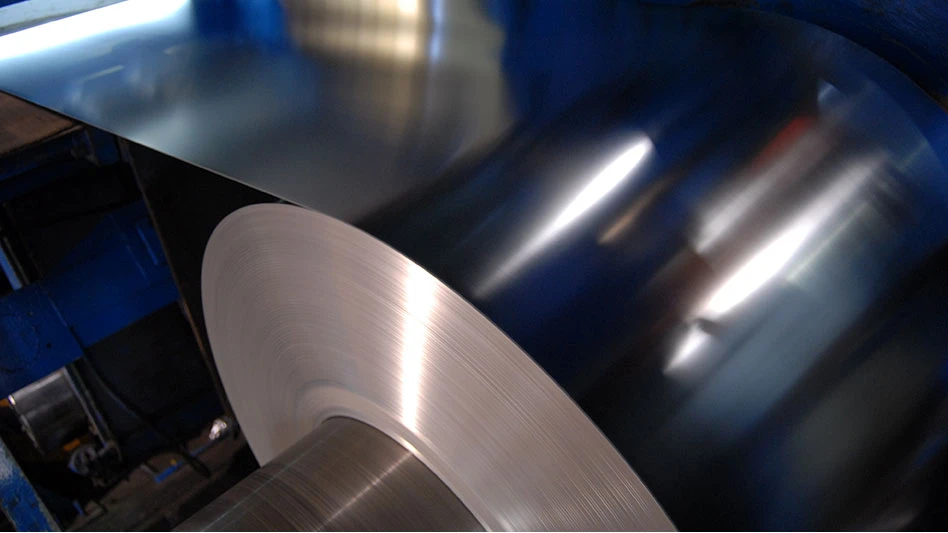China’s government is encouraging more systematic and regulated methods to collect obsolete electronics and appliances in that nation, according to several presentations given at the 2014 convention of the China Nonferrous Metals Association Recycling Metal Branch (CMRA), held in early November in Guangzhou, China.
 |
| Tang Aijun, CRRA |
A presentation prepared by Xu Kaihua of GEM High-Tech Co. Ltd., Shenzhen, China, and given by his colleague Jiang Zhengkang, outlined the national strategy for electronic scrap recycling that has been mandated to comply with China’s current five-year plan.
The strategy entails an “old-for-new” take-back system when consumer electronics are purchased and the licensing and construction of more than 100 certified or “appointed” electronic scrap processing facilities thus far. The strategy also has extended producer responsibility (EPR) aspects to it, according to Jiang.
“After three years of effort by the Chinese government, the recovery, treatment and policy of discarded electronic [scrap] in China has reached the advanced international level,” stated Jiang.
Jiang and Xu claim that “90 percent of the [electronic scrap] has been treated by the 107 appointed recycling enterprises” in 2013, and that unsafe and environmentally unsound methods of processing circuit boards or monitors are fading.
The EPR system established in China calls for manufacturers and importers of appliances to pay from 7 to RMB13 ($1.15 to $2.10) for each TV, computer, air conditioner, refrigerator and washing machine produced. The “appointed” processing facilities, meanwhile, receive a subsidy between RMB35 to 85 ($5.70 to $13.85) to dismantle end-of-life items collected.
Tang Aijun, Deputy Secretary General of the China Resource Recycling Association (CRRA), Beijing, provided another overview of China’s national system, noting that its “management procedure is very complicated” and displaying a flow chart to match that description.
In 2012, the first year the system was in place, televisions flowed into the qualified facilities in overwhelming numbers, comprising 90 percent of the units these dismantling facilities received. By contrast, washing machines made up just 3.4 percent of the inbound stream and refrigerators just 1.7 percent.
In 2013, the inbound stream produced more than 455,000 tons of cathode ray tube (CRT) glass, while yielding just 78,000 tons of scrap steel, 17,200 tons of copper and 1,430 tons of aluminum.
While the new facilities have provided a home for televisions and monitors, Tang said “compulsory collection and management” of appliances with a scrap metal value is “difficult to execute.”
Among the companies intending to benefit from managed appliance collection is GREE Electric Appliances Inc., according to presenter Wang Hongxia, general manager of that Zhuhai, China-based firm.
GREE makes air conditioners and, according to Wang, is aware that discarded “home appliance recycling channels mainly still rely on street vendors” and that recycling through these informal channels “is more profitable than direct dismantling” at the licensed centers. “At present, the [subsidy] is RMB35, but the scrap air conditioning recycling value is higher” said Wang. “I suggest to adjust the limit of the subsidy to lay the foundation for [proper] reverse logistics.”
Manufacturers such as GREE, said Wang, “should strengthen cooperation with [licensed] recycling enterprises” that can help ensure air conditioners meet a safe and environmentally sound end in China.
The 2014 CMRA Annual Convention was at the Dongfang Hotel in Guangzhou, China, Nov. 7-9.
Latest from Recycling Today
- AISI, Aluminum Association cite USMCA triangular trading concerns
- Nucor names new president
- DOE rare earths funding is open to recyclers
- Design for Recycling Resolution introduced
- PetStar PET recycling plant expands
- Iron Bull addresses scrap handling needs with custom hoppers
- REgroup, CP Group to build advanced MRF in Nova Scotia
- Oregon county expands options for hard-to-recycling items





